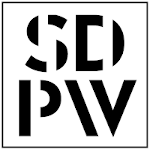Wykaz obszarów badawczych związanych z tagiem IoT:
| # | Obszar badawczy | Dziedzina naukowa |
|---|---|---|
| 1 | Integration of knowledge and ICT systems. The development of ICT infrastructure as a key layer of civilization will follow several basic directions. At the technological level, it is the integration of more and more distant functionalities, virtualization, development of structural components, major and minor, such as energy resources, databases and centers computing, clouds, fog, next-generation mobility such as 6G and quantum, networg edge, artificial intelligenceand machine learning, internet of things, digital twins, cybersecurity, and more. At the infrastructural level, it is the merging of ICT with other technical and non-technical layers of civilization material and non-material, such as science and knowledge, medicine and health protection, culture, transport, construction, civil engineering, energy, industry, security, and much more. The research concerns the directions of ICT development and their infrastructure integration. | |
| 2 |
|
|
| 3 |
Modeling, control, and simulation of complex systems (ICT, financial engineering, medicine, water resources, etc.), computer decision support systems, recommendation systems, wireless sensor networks, mobile ad hoc networks, optimal resource allocation in data networks and computing centers, parallel and distributed programming, global optimization algorithms, machine learning and Big Data processing, blockchain technologies, cyber security.
|
|
| 4 |
Technology acceptance assessment, statistical data analysis, structural equation modeling, management problems in health care, social aspects on smart cities, hydrogen technologies, project management
|
